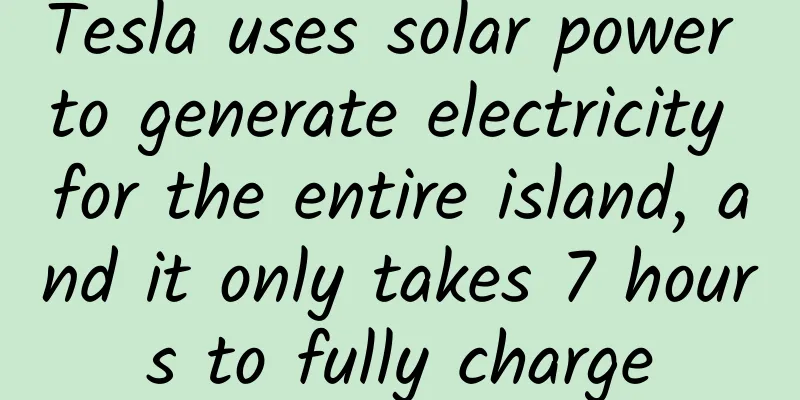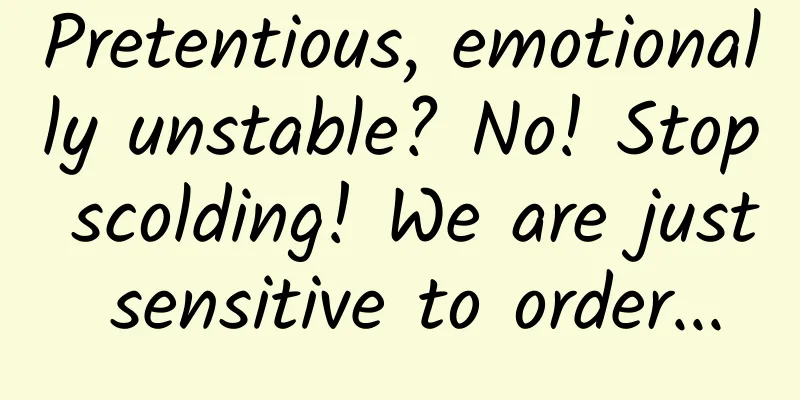If you are clear about these 4 points, you can boldly place elevator advertisements!

|
Probably starting from the end of 2018, it can be clearly felt that Party A's advertising style has become more conservative. The reason is the same as usual. The overall environment is not good. In order to reduce costs, cutting advertising and marketing budgets has almost become an inertial operation for companies, even though everyone knows that this is a stopgap measure that only treats the symptoms and not the root cause. In fact, if you think about it from another perspective, when your peers and business partners are taking a step back, isn’t it a good opportunity for you to soar to success? What's more, without the madness of the bull market, the return to the normal period of calm is the moment to witness strength. Today, let’s talk about the current advertising strategies. Let’s talk about the choice of media categories first. Su Qin suggests that whether you are building a brand or achieving results, you can consider elevator advertising more. The brand Platinum Travel Photography is a typical example. It was criticized and became a hot topic at the beginning of the year, and it was triggered by elevator advertising. Its popularity rose overnight. I won’t say much about it. I will mainly talk about the timeliness of advertising conversion. Su Qin has many friends who are Party A. They have noticed the increasing value of elevator advertising, but they don’t know that the sales promotion effect of elevator advertising has reached the first place, tied with living room TV! 18% , this is the data given by the third-party market research organization "Digital 100" in August. That’s not all. Let’s look at another data released by CTR Media Intelligence at about the same time: Among all types of advertisements placed by commercial and service companies in 2019, only elevator advertising continued to grow significantly, while television, the Internet, cinemas, etc. were all declining. The reason is very simple. On the one hand, young people nowadays are not very interested in television, magazines, newspapers and radio. The main consumers are not paying attention to them. Who would still advertise on them? Elevators are different. Young people attach great importance to convenience when renting houses or looking for jobs. Elevators are standard equipment and a daily necessity. You may not like it, but you cannot avoid it. You cannot ignore it. As one thing grows, the other shrinks, the sales effect of elevator advertising will most likely surpass that of living room TVs and take the top spot. Some people may argue that according to what you said, young people never leave their mobile phones and tablets, and they only stay in the elevator for a few minutes. Shouldn’t the advertising value of Internet apps be stronger than that of elevators? This is true, but we can ignore another parameter - the impact of user behavior on communication efficiency . When it comes to Internet APP ads, users have a lot of choices: for long video ads, those who are rich can become members and skip them, while those who are thrifty can put down their phones and do other things; as for ads on Tik Tok, Kuaishou, and Moments, users can simply swipe away and ignore them. However, in the confined space of an elevator, brands can take advantage of limited fragmented time and, through simple creativity, forcefully output information to users, which can easily produce results. Even when users are in an elevator with strangers, the audio and video images from the advertisements can resolve the awkwardness and help build brand memory. Another point is that the online market has entered a stage of competition for existing resources. Internet technology giants are all tapping into offline traffic, which has led to the value of elevators, a "classical" traditional offline medium, to soar. Xinchao Media, which has grown rapidly in the past two years, has received strategic investments from giants such as Baidu and JD.com, which is a clear proof of this. According to Su Qin's analysis, the first reason why Baidu and JD.com were attracted by Xinchao's ability to capture and activate offline traffic is that Xinchao has Internet genes and technology, and can accumulate the most valued strategic resource at present - consumer big data. When it comes to elevator advertising, you should also make careful choices to avoid pitfalls. In terms of classification, it is better to invest in elevator TV ads rather than frame ads. From any perspective, elevator screen advertising will replace outdated frame advertising. The data from CTR Media Intelligence mentioned above shows that in the first half of 2019, the growth rate of TV advertising in elevators in the commercial service industry was as high as 146.4%, accounting for 18.5%, while the corresponding elevator posters only grew by 20.3% and accounted for 9.5%. From the consumer's perspective, the difference between elevator TV ads and frame ads is like the experience of using a smartphone and a feature phone; they are not on the same level. From the advertiser's perspective, frame ads are costly and have a very low cost-effectiveness. Framed ads have paper costs and are quoted at a higher price. It is understood that the price of frame advertising in the Beijing and Shanghai regions can be four times that of elevator TV advertising. The frame is a static graphic advertisement, while the elevator TV is a video advertisement, which can provide sensory stimulation to the audience through vision and hearing. Consumers can completely ignore the poster advertisements by watching their mobile phones, but the elevator TV can also transmit information through sound, which is unavoidable. There has always been a saying in the advertising circle that "50% of advertising costs must be wasted." In fact, a large part of the waste comes from frame ads. Especially with the popularization of technologies such as AI, 5G, and the Internet of Things, the digitalization and intelligence of elevator advertising is the general trend, and frame advertising is unlikely to make a difference in the new era. Domestic elevator media companies, led by Focus Media and Xinchao Media, are currently working hard to expand elevator smart TV resources, which also illustrates this point. As mentioned earlier, as a representative of lifestyle advertising, the value of elevator media continues to increase. Office building advertising and community building advertising are becoming new fronts for brand marketing. How should we choose between these two? On a practical level, if the budget is sufficient, this is not a problem at all. It is naturally best to focus on both office building advertising and community building advertising, and fully cover the work and home scenarios. But the problem is often that the advertising budget is insufficient, especially during economic slowdown periods, when the budget is tight. It is common sense that budgets are limited and advertising can only be made based on the nature of target consumers. From a development perspective, with the development of household consumption and new retail, the communication value of community media platforms is gradually expanding, and will surpass office buildings in the future. Many brand owners may not realize this yet, so this issue is worth spending some time to clarify. First of all, this is a question of channel value. Judging from the trend, the era of family consumption has arrived. Whether it is Internet technology giants seeking offline traffic, or fast-moving consumer goods, household chemicals, automobiles and other industries conducting promotions, "marketing to the home" is the general trend. Moreover, white-collar workers in office buildings all have to go home, and there are also non-white-collar workers in community buildings, so the types of people that can be covered are invisibly expanded. Then, it’s a question of competing results. In terms of user portraits, the crowd in office buildings is indeed more precise and pure, not as complicated as the community crowd. However, we must not ignore the audience's acceptance, tolerance and other psychological factors of advertising in different scenarios. Community housing = warmth and relaxation, office scene = busy and anxious . The actual communication efficiency of the former should be higher. To take the negative example of office building advertisements, the people who have successively made the elevator advertisements of Platinum Travel Photography, Boss Direct Hiring, and SoYoung the hot search targets are precisely the white-collar workers that the brands are thinking about. I didn't want to go to work early in the morning, but I was bombarded with brainwashing advertisements. If I were in your shoes, I would probably also criticize the brand. Although this type of advertising is effective, few brand owners would be truly proud of it, right? Looking at the status of white-collar workers in the community, all their "homebody" activities, such as watching TV series, ordering takeout, and shopping online, are done at home. During this year's 618, JD.com launched a series of "little sisters" brand advertisements, taking advantage of the time when "little fairies" go downstairs to throw away garbage and see elevator advertisements, to stimulate them to excitedly open their mobile phones and start "shopping". To explain it using communication theory, community media is more in line with the audience's needs and status at the time, which can more easily stimulate the audience's desires, and ultimately shorten the audience's decision-making time and take immediate action! Of course, this also involves the issue of cost. The elevator resources in community residential buildings are dozens of times that of office buildings, but the investment cost is lower. Can the property prices in the residential area be compared with those of office buildings? This also makes it more expensive for media to enter the latter. Since the wool comes from the sheep, the advertising quotes will naturally be high. Spending the same budget to achieve better results is a permanent requirement for brand advertisers. Since the birth of positioning theory, it has been frequently used in brand marketing and promotion. A well-known domestic elevator advertising company has also been using "positioning" as its highlight for promotion. It has deeply bound itself to positioning companies and called on its customers to do positioning before placing advertisements. But many brands may overlook the communication link. Positioning + communication are inseparable. If the positioning is accurate but not effectively communicated, the brand will still be submerged in the industry. When placing elevator advertisements, the brand must have correct positioning and sufficient advertising exposure. If the funding is sufficient, "cross-screen" (covering mobile phone screens, Internet computer screens, offline elevator screens, subway screens, outdoor large screens, etc.) is better. This is also the approach that big brands with sufficient budgets are keen on. If the budget is limited, you must remember to deliver as much as possible to achieve maximum coverage within the limited budget. It is better to concentrate coverage and create "screen dominance" rather than lengthen the dissemination timeline and disperse combat effectiveness. It is worth mentioning that new technologies in the new era will force elevator advertising companies to evolve and transform into "media traffic platforms" and move towards digitalization and precision of advertising. Internet giants such as Tmall, JD.com, and Tencent have already paved this path. Alibaba has invested in Focus Media, Baidu and JD.com have invested in Xinchao Media, and new forces in elevator media are also on this path. By then, the existing elevator advertising landscape is likely to be reshuffled. Author: Su Qin Source: Chief Marketing Think Tank (ID: iyingxiaotong) |
<<: Refined operation strategy for users with repurchase rate of over 95%
>>: Wuwei Li Dong "Main Line Dragon Catching" Issue 04 Stock
Recommend
Nanjing Tea Studio is recommended, and friends who have been there are full of praise
Recommendations for places to taste tea in Jiangn...
TV games are in a farce, and the battle for users is imminent
Since its emergence, TV games have developed rapi...
Why can't an aerial bomb that explodes as soon as it lands explode on the plane?
Since the birth of the world's first heavy bo...
Chinese toon is delicious, but you may be worried about nitrite poisoning! Here's a way to solve it
Another spring has come, and Chinese toon has beg...
[Making a living by speculating in antiques 2007] Dark horse super large band tactics
[Making a living by speculating in antiques 2007]...
APP promotion and operation planning, a new way of event operation!
Suppose a scenario where people are shopping offl...
The universal formula for Xiaohongshu's popular articles
Whether a big hit is a matter of luck, but whethe...
Why do well-known brands have more traditional advertising?
In life, have you noticed that the more famous a ...
4 Things I Learned Developing My First Swift App
My app development project this summer is Instant...
Does a moving hairline mean hair loss? Don’t panic, real hair loss has these characteristics...
Author: Tang Jiaoqing, attending physician of der...
Operators shut down 2G/3G: Who will pay for everyone to replace their phones?
As early as two years ago, operators led by China ...
How to provide GPS-related positioning services on Android
Today, due to work needs, I took out a GPS test p...
My practical experience in Android development
I have always wanted to write an article summariz...
How to make a 400 call? How much does a 400 call cost?
400 telephone numbers can enhance a company's...
These two practices are a waste of smartphones
Smartphones play an increasingly important role in...









